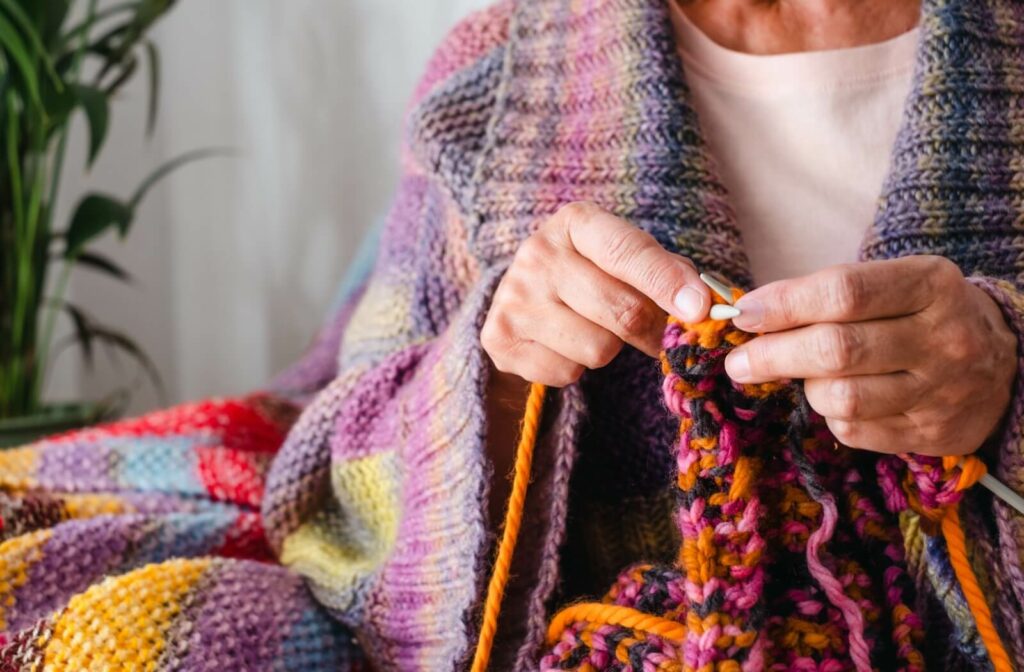Key Takeaways
- Art therapy offers unique mental health benefits by combining creative expression with therapeutic support
- Creative activities can reduce anxiety, depression, and isolation while building confidence in seniors
- Art therapy supports memory care needs by helping maintain identity and connection to personal history
- Group art sessions create meaningful social connections and new friendships
- Quality senior living communities integrate art therapy into comprehensive wellness programs
Creative expression has always been a powerful way to communicate feelings, process experiences, and connect with others. For seniors navigating the changes that come with aging, art therapy offers something truly special—a chance to explore emotions, build relationships, and maintain mental wellness through the simple act of creating. Many communities now recognize how creative arts participation can significantly improve health outcomes for older adults.
Art therapy provides seniors with significant mental health benefits, including reduced anxiety and depression, improved cognitive function, stronger social connections, and enhanced self-worth through guided creative expression. Whether you’re considering personal care options or exploring memory care services, understanding how art therapy can support your mental wellness journey makes a real difference in your quality of life.
How Art Therapy Works & Why It Matters for Senior Mental Health
Art therapy isn’t about artistic skill—it’s about expression, connection, and healing. Unlike regular art classes that focus on technique, art therapy emphasizes the creative process and what it reveals about your emotions. Guided by a trained therapist, participants explore feelings that may be hard to express with words, making it accessible and meaningful for everyone.
Benefits of art therapy for emotional and cognitive well-being include:
- Encourages emotional release: Creating art helps process complex emotions and experiences in a gentle, nonverbal way.
- Boosts mood naturally: Creative activity triggers feel-good chemicals that reduce stress and promote relaxation.
- Stimulates the brain: Art engages multiple brain regions, strengthening memory, focus, and neural connections.
- Promotes self-understanding: The act of creation can uncover insights and perspectives that traditional talk therapy might miss.
- Feels approachable for seniors: It’s an enjoyable, familiar way to engage with emotions, reconnect with positive memories, and express individuality.
Through creative expression, art therapy helps people of all ages—especially seniors—find comfort, clarity, and confidence in their emotional and cognitive health.
What Are The Key Mental Health Benefits of Art Therapy for Aging Adults?
Help Reduce Anxiety and Depression
Art therapy provides a healthy outlet for worries and sadness that often accompany life transitions. When you create art, you’re actively moving energy and emotions out of your body and onto paper or canvas, which can bring immediate relief from anxious or depressed feelings.
The repetitive motions involved in many art activities—like painting, drawing, or sculpting—can have a calming, meditative effect. This natural stress reduction helps quiet racing thoughts and creates a sense of peace that extends beyond your art session. Understanding mental health strategies can help you recognize how creative activities fit into broader wellness approaches.
Build Confidence Later in Life
Creating something with your own hands provides a sense of accomplishment that builds self-esteem. Each completed project becomes evidence of your capabilities and creativity, reinforcing your value and worth.
Art therapy helps you focus on what you can do rather than what you can’t. This shift in perspective can transform how you see yourself and your potential for growth and enjoyment in later life.
Process Grief and Life Transitions
Major life changes—losing loved ones, moving from your family home, or adjusting to health changes—can feel overwhelming. Art therapy provides a safe space to explore these complex feelings without judgment.
Through color, texture, and imagery, you can express grief and loss in ways that feel manageable. This creative processing often leads to healing and acceptance that supports your emotional wellbeing.
Improve Memory and Cognitive Function
Art-making engages multiple cognitive processes simultaneously—planning, decision-making, fine motor skills, and memory recall. This mental workout helps maintain and sometimes improve cognitive function.
Creating art also stimulates long-term memory as colors, textures, and activities trigger recollections from earlier in life. These memory connections support overall brain health and personal identity.
How Art Therapy Supports Social Connection and Personal Care
Group art therapy sessions create natural opportunities for social interaction without the pressure of forced conversation. You can work alongside others, sharing the creative experience while maintaining your individual focus. Research shows that social interactions significantly boost happiness, and art groups offer an ideal setting for meaningful connections.
The shared activity helps break down barriers and provides common ground for connecting with others. Many people find it easier to open up when their hands are busy creating. Working on projects together builds bonds through shared discovery and mutual encouragement, often developing into friendships that extend beyond the art room.
Art therapy also offers an alternative way to express complex feelings that words can’t fully capture. As participants grow more comfortable sharing through art, they often find it easier to communicate about their emotions and connect more deeply with others.
Art Therapy Benefits for Seniors with Memory Care Needs
For seniors experiencing memory changes, art therapy provides cognitive stimulation that can help maintain mental function. The multi-sensory nature of art-making engages different parts of the brain, potentially slowing cognitive decline.
Creative activities also provide structure and routine while remaining flexible enough to accommodate changing abilities. This balance supports both cognitive health and emotional wellbeing. Adaptive creative activities can be tailored to meet individual needs and capabilities.
How Can Seniors Use Art to Connect with Memories?
Art therapy can unlock memories that seem lost, as familiar materials and activities trigger recollections from earlier times. Creating art might remind someone of childhood experiences, family activities, or professional skills.
These memory connections help maintain personal identity and provide opportunities for sharing stories and experiences with others. The act of remembering through art often brings joy and validation.

Live a Life of Brilliance at Fieldstone at Chester Springs
At Fieldstone at Chester Springs, we understand that mental health and creative expression are important parts of overall wellness for seniors. Our caring team recognizes how activities like art therapy can enhance quality of life and support emotional wellbeing.
If you’re interested in learning more about how our community supports mental health through creative programming and comprehensive care, we’d love to hear from you. Contact us today to schedule a tour and discover how we can help you or your loved one thrive in a supportive, caring environment.





